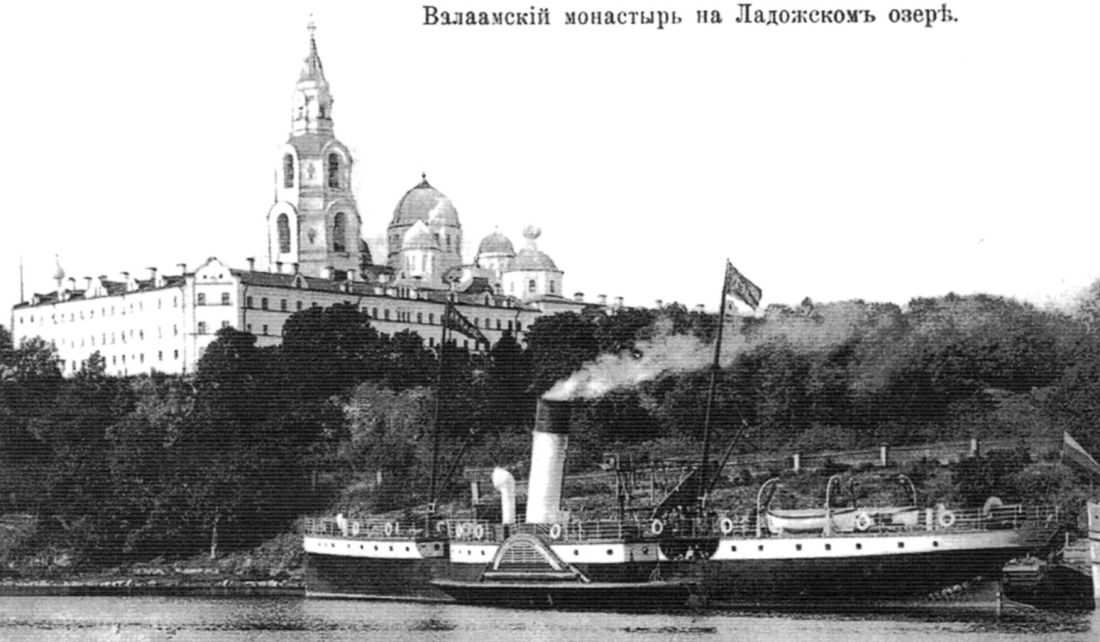paddlesteamers.info : The Internet's leading website for
Side-Wheeled Paddle Steamers
River Neva - Lake Ladoga - River Svir - Lake Onega, Russia
Lake
Ladoga, close to St Petersburg, the then capital of the Russian Empire,
was shared between Russia and Finland until the end of World War II
when it became fully incorporated into the Russian Federal Soviet
Republic of the USSR. It is linked to Lake Onega by the River Swir.
Ladoga is linked to the sea (Gulf of Finland, Baltic Sea) at St
Petersburg by the River Neva : Onega is now linked to the White Sea to
the north by a shipping canal.
Although primarily served by
cargo vessels, two interesting paddle steamers were purchased from
Scotland to provide passenger and cargo services for the Onega Steam
Navigation Company. It is likely that they were ordered from Hutson
& Co of Kelvinhaugh, Glasgow, with construction of the hulls
subcontracted to The Grangemouth & Greenock Dockyard Company. It is
uncertain whether they were built at Grangemouth or Greenock (or shared
between the yards) but Greenock appears most likely.

Above : Apostol Pyotr : Source Post card ex-wikipedia. Public Domain
Apostol Pyotr (Apostle Peter)
Built in 1906 by the Grangemouth & Greenock Dockyard Co
195 ft : 478 GT
Compound diagonal engine : 23 and 48 in x 51 in by Hutson & Co of Glasgow
Apostol Pavel (Apostle Paul)
Built in 1906 by the Grangemouth & Greenock Dockyard Co
190 ft : 489 GT
Compound diagonal engine : 23 and 48 in x 51 in by Hutson & Co of Glasgow
The ships undertook a summer service
One
of the passenger routes was to the Valaam island in the northern part
of Lake Ladoga where a monastery was visited by numerous
pilgrims.

Above : Apostol Pyotr at Valaam : Source Post Card ex-wikipedia. Public Domain
The
vessels' careers were interrupted and transformed by the advent of
World War I. In 1915 they were requisitioned by the Imperial Russian
Navy and converted to minesweepers, initially serving at Reval
(Tallinn) on the Baltic coast of Estonia. Following the end of the war
they found themselves under the control of the Finnish authorities and
put up for sale as Peeter and Pavel.
Purchased privately the vessels were not put back into service for
their original purpose and in 1920 were purchased by the newly
independent Estonian governement for minesweeping duties as Suurop and Ristna.
Once mines had been cleared by 1921 it was hoped to return the vessels
to civilian use but Suurop was not profitsable and returned to lay-up
alongside Ristna. In 1926 they were revived for minelaying. 1940 saw
the takeover of Estonia by the Soviet Union. On August 11th 1941 Suurop
hit a German mine off Virtsu with the captain and fifteen crew
killed, grounding and becoming a total loss. Ristna appears to
have survived in a civilian role, albeit a non-passenger role, until
1957.
Return to
Historical Database

